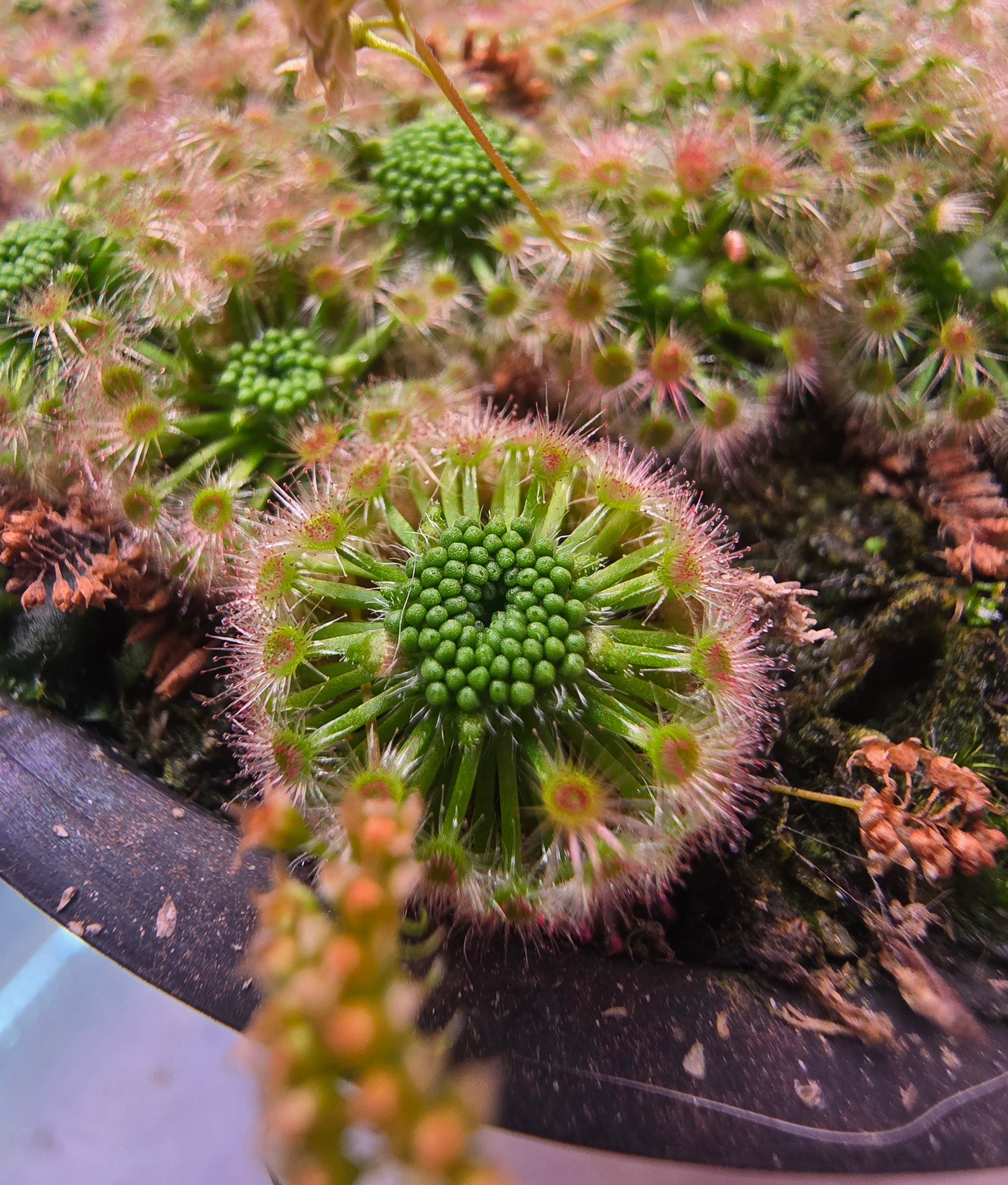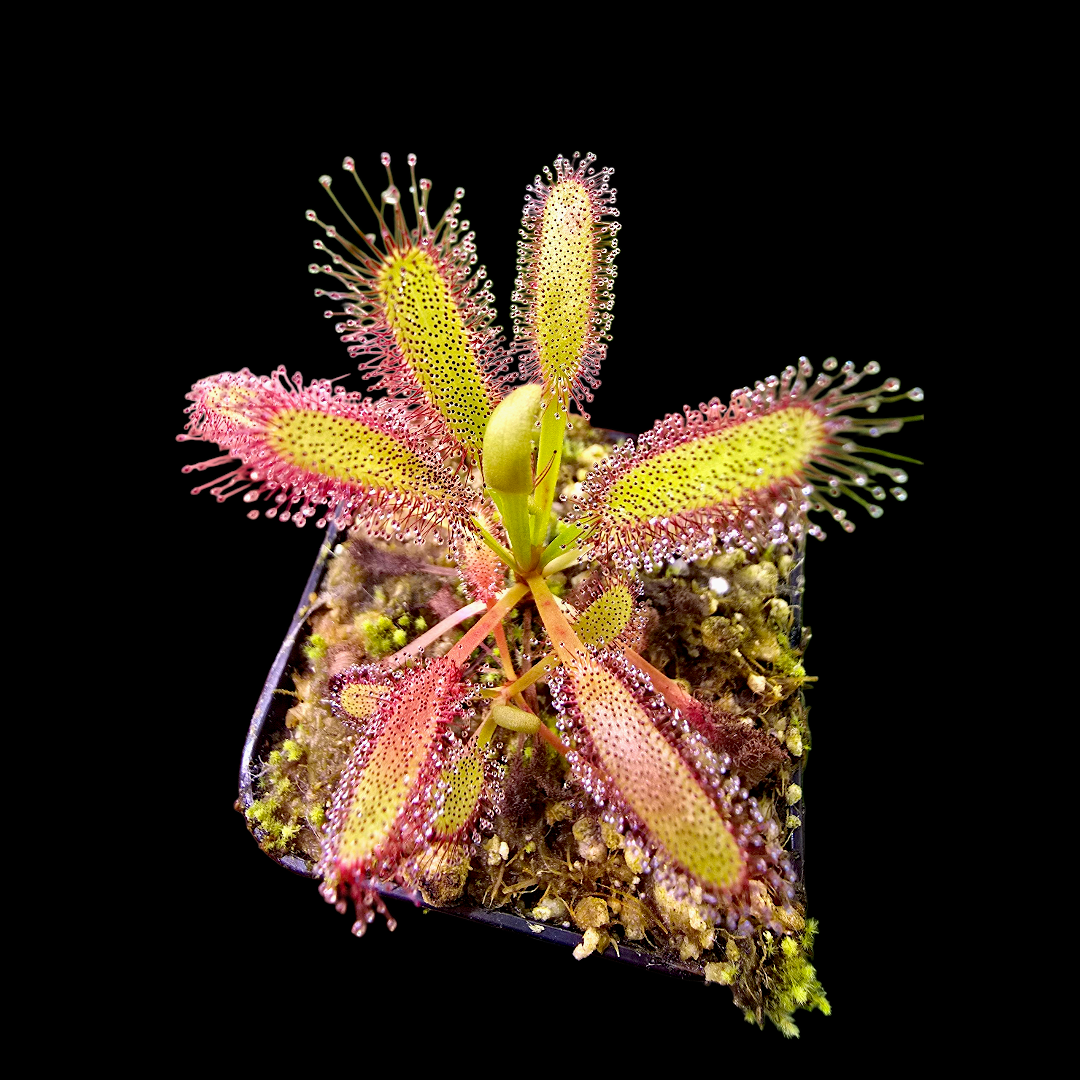Gemmae are asexual reproductive structures produced by pygmy sundews. They function like seeds but grow into exact clones of the parent. They're usually produced during the cooler months and are short-lived, so timing is crucial!
1. HANDLING AND STORAGE
Handle gemmae only with soft tweezers, a moist brush, or toothpick to avoid crushing them.
Store in a cool, dark place (e.g., fridge) if not sowing immediately — but aim to sow within 10 days of harvest for best viability.Do not let them dry out completely during storage.
2. Growing Medium (Soil Mix)
Use a nutrient-free mix. Ideal options:
50:50 Silica Sand : Peat moss
Pure long-fiber sphagnum (chopped, well-rinsed)
Silica sand + perlite (for excellent drainage)
Avoid anything with fertilizer, compost, or garden soil — these will kill sundews.
🔸 Tip: Rinse peat and sand thoroughly with RO or distilled water before use.
3. Pot Setup
Choose shallow pots (5–8 cm deep) with drainage holes.
Use the tray method: Sit pots in a tray filled with 1–2 cm of distilled, RO, or rainwater.
Maintain water just below the surface to keep the media moist, not soggy.
4. Lighting
Provide bright indirect light or strong LED grow lights (12–14 hours daily).
Avoid harsh mid day sun until they are established — young gemmae can dry out or burn.
5. Temperature & Humidity
Ideal temps: 18–28°C (60–82°F)
Gemmae germinate best in cooler, stable conditions.
Moderate to high humidity (~50–70%) helps, but good air circulation is essential to prevent fungus.
6. Sowing the Gemmae
Do NOT bury them! Simply place gemmae on the surface of your moist medium.
Gently press them down to ensure contact — but don’t push them in.
Mist lightly to settle them into place.
7. Germination Time
Most gemmae begin sprouting in 3–10 days.
You’ll see tiny rosettes forming and miniature leaves emerging.
8.After Germination
Keep in high light to encourage compact, colorful growth.
Maintain moist but not waterlogged soil.
Avoid disturbing them for the first 4–6 weeks.
10. Feeding
At about 4–6 weeks, once traps are clearly visible:
Feed tiny insects like fruit flies, springtails, or crushed fish food (sparingly).
Avoid overfeeding — once a week or every 10 days is plenty.


